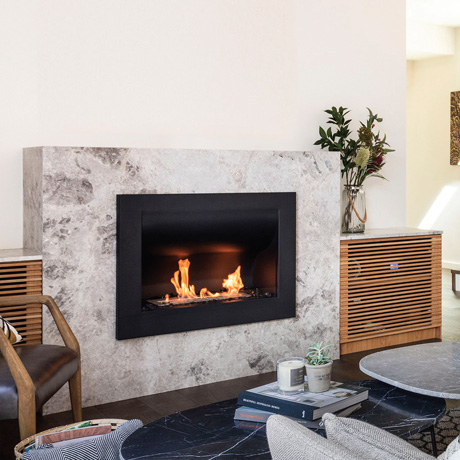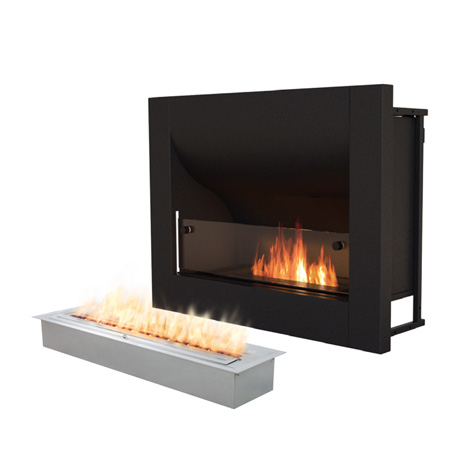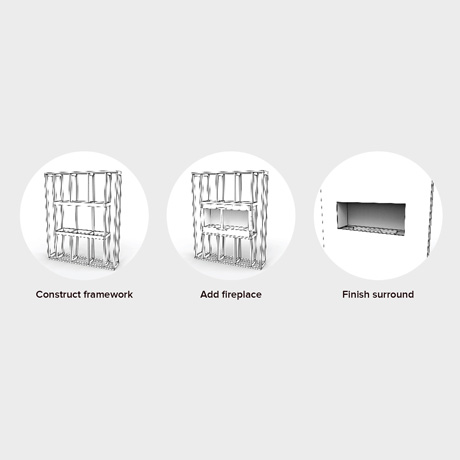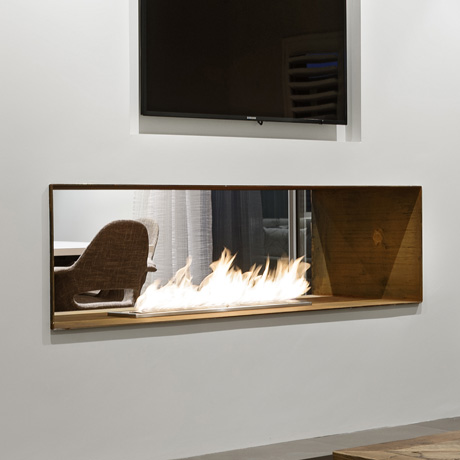
See why biofuel provides a better solution.

The key differences.
There are many key differences between biofuel and open fronted gas fireplaces. We compare both options so you can understand the features and decide which fireplace best fits your lifestyle and space.
Some of the key differences are:

Biofuel Fireplaces
Biofuel fireplaces do not require any utility connections, fresh air-vents, a chimney or a flue, and with less subcontractors needed, this significantly reduces installation costs and time. Simply purchase a Naked Flame fireplace, have it installed, and enjoy. Or unpack and position a freestanding fireplace, which requires no installation.
Gas Fireplaces
It costs more money to install an open fronted gas fireplace. For example, they require a fresh air vent, a flue (chimney), a gas connection point and electrical connection.

Biofuel Fireplaces
Biofuel fireplaces produce a vibrant orange 'clean- burning' flame. There is no heat loss because they do not require a flue or chimney, therefore all the warmth generated from the open flame is distributed into the room. A single biofuel burner can heat up to 65m2. Biofuel is an excellent option for smaller spaces or for installations where biofuel will be used in conjunction with another source of heat. *65m2 is based on using an XL1200 in an insulated room with a floor-to-ceiling height of 2.4m.
Gas Fireplaces
Gas fireplaces also produce a real flame, but not as vibrant as biofuel. The flame produced by an open fronted gas fire will burn hotter than biofuel, however, most of the heat generated is lost through the flue. Open fronted gas fires must have a fresh air vent for the room they're installed into, due to the 'acceptable level' of carbon monoxide produced by the gas fire.
Biofuel Fireplaces
Our biofuel burners are made from 100% stainless steel and have no inaccessible moving parts, which means no expensive replacement costs. They can be simply washed out by hand in hot soapy water or in the dishwasher.
Gas Fireplaces
All gas fireplaces need servicing every 12-18 months to maintain their warranty. Servicing needs to be performed by a qualified gas fitter and does not include the cost of replacement parts which can be expensive.

Biofuel Fireplaces
Because biofuel is clean-burning, Naked Flame models do not need a chimney or a flue for venting. They can also be installed into a timber stud frame – in fact, almost anywhere!
Gas Fireplaces
It is not possible for every space to include a chimney, such as apartments or some commercial spaces.

Biofuel Fireplaces
Biofuel ethanol is an eco-friendly fuel source that can be ordered online and delivered to your door.
Gas Fireplaces
LP Gas and Natural Gas are not carbon neutral, and Natural Gas is not readily available everywhere.
Biofuel Fireplaces
Average Cost $1.93/h (Based on the BK5 Burner)
Gas Fireplaces
LPG Average Cost $1.91/h. NG Average Cost $1.67/h.
*Gas prices do not include bottle hire/replacement fees ($340-$420 a year) or connection fees ($0.60- $0.90/day). The average cost of LPG was calculated by finding the average price per mj amongst 3 gas providers per state. NG average cost source: energy. gov.au report; 2017. Above prices are quoted in AUD.